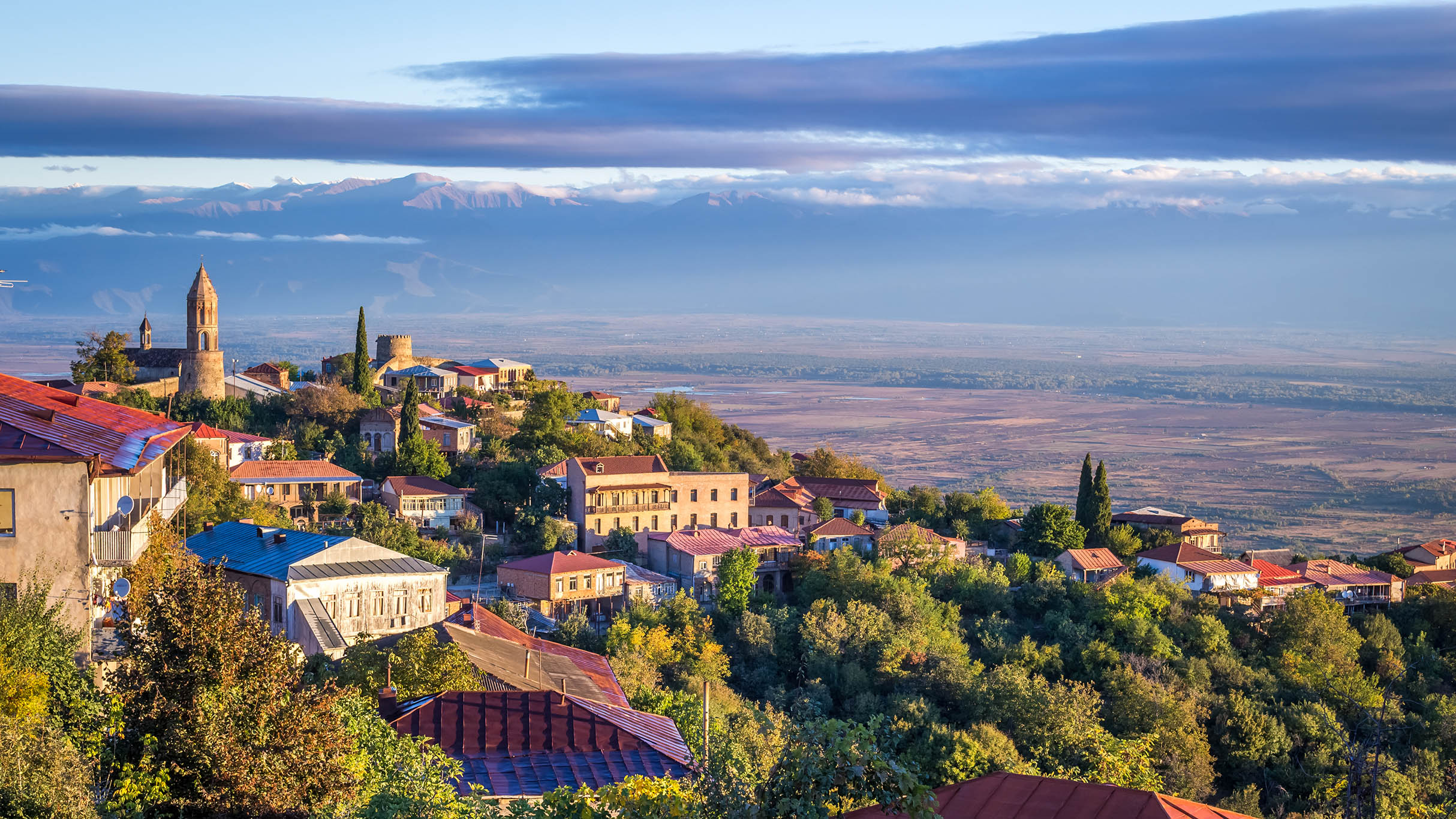Signagi is one of the most remarkable towns of Georgia, where ancient monuments are still alive. It is located to the East of Georgian Capital – Tbilisi, just 117 km away.
It has always been in the centre of events. Ancient cultural monument, founded by king Erekle II in 1762 - monumental fortress – is very expressive. Twenty three towers and seven gates create the wall surrounding the town, stretching on 4.5 km and encompassing other monuments within the town. Unique terraced architecture perfectly fits eminent landscape of Signagi. Structures constructed mostly in 18-19 centuries reflect the requirements of the epoch. Ground floors of two, three-storey houses built with Georgian thin brick were destined for various shops and workshops (still popular for high quality leather production, blacksmithing, carpet weaving and ceramic products). Narrow, paved streets cross the slopes and visitors face beautiful buildings with wooden ornamented balconies and tile roofing, unique decorative location and rounded windows. Unlike Tbilisi, in Signagi there are no yards surrounded with balconies from all sides. Houses stand next to each other creating complete settlement unity. The so called fifth facades, or the roofs, contribute in determining Signagi image. Many famous Georgians who had great impact on history and culture of the country lived in Signagi, among them composer Vano Sarajishvili, Philosopher and writer Solomon Dodashvili, Political figure Sandro Mirianashvili and many others. However, most prominent person born in Signagi, small village Mirzaani, is internationally recognized primitivist painter Niko Pirosmanishvili. City of Signagi has always been popular with traditional crafts: leather production, leather production, blacksmithing, carpet weaving and ceramic products. Weaving carpets and rugs and tapestry are one of the ancient traditions still very actively followed in Signagi
